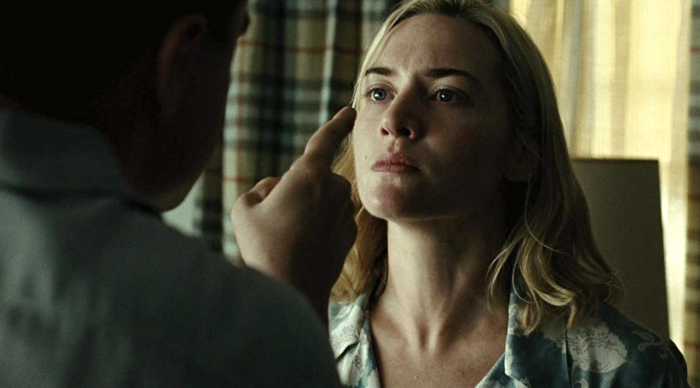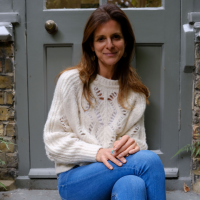Divorce rates were down six percent in 2017 compared with the year before.
But I wonder what the statistics would be if we asked everyone how happy they actually were in their relationships?
All relationships will struggle at one time or another. Living with someone ’round the clock and sharing a life with them—and perhaps having children together—is no mean feat.
What I so often find, however, is that much of the deep angst between a couple has started as a result of each of the duo triggering the other into their unhealed childhood wounds—and not understanding that this is happening.
How often do you get into a fight with your partner only to realise that you are both actually behaving—and feeling—like children? It doesn’t even need to be around anything particularly huge.
Perhaps it’s how your spouse leaves their dirty mugs around the house and you end up resentfully clearing them away. Or maybe you feel your insides burning in a rage when the bin is not emptied, or the bathmat picked up (or left on the floor). It could be a feeling of rejection when your partner is too often going out with their mates without you. Or perhaps it’s a feeling of unfairness around control of finances, or feeling left out and abandoned when a baby comes along.
Any behaviour that our partner partakes in that leaves us with a heightened (or “hysterical”) feeling, rather than just feeling annoyed or hurt in a grown-up way, or that leaves us with a negative thought (I felt uncared for, I felt powerless, I felt judged, I felt unloved, I felt trapped, I felt manipulated), means that we have been triggered right back into our childhood wounds, and the child part of us that is wounded is coming out and playing out in the adult relationship. This causes no end of struggle and stress for partners, and often causes a relationship to fail because neither party understands exactly what is happening until it is too late and there is too much hurt under the bridge.
But what if we unconsciously choose our partners because we know that they are going to highlight all of our childhood trauma—our wounds? What if, after the bliss of falling in love has subsided and we see our partner for their warts and all and we can’t understand why we ever wanted to be with them in the first place, what if this is exactly what is supposed to happen—in order for us to heal?
Now, that would be magic. And according to Harville and Helen Hendrix, a husband and wife relationship counselling duo, that is indeed what is supposed to happen.
They call this partner who drives us to insanity our “Imago.” We have unconsciously chosen a partner “with the same deficits of care and attention that hurt us in the first place [in our childhoods].” An image of that person who hurt us when we were little. In order that we can heal. Our unconscious mind, desperately seeking the wholeness that we were born with, has cleverly found us a mate who will trigger all of our stuff so that we can heal it and return to that wholeness once more.
So we get triggered and triggered and triggered—and triggered again—by this person.
And triggers are gifts. They are the pathways to our wholeness. Because triggers take us right back into the original childhood wound. And once we’ve found that wound, we can heal—so long as we realise that we are being triggered.
We really do need to understand that the craziness we feel in conflict with our partner is mostly due to us being triggered by them, and that the hurt and pain we are feeling is actually not about our partner per se, but much more about our unmet needs from childhood. Once we have figured that out, we can seek help and do our healing; we can do our own trauma work.
For the healing to take place for the couple, it is useful if both people in the relationship understand that they are being triggered by their partner, and then they need to work through that pain, either individually or together—or preferably both individually and together. When this happens, the relationship will then grow into a more mature and even more loving one than before.
Sadly, many people only seek help after this triggering of each other has been happening for such a long time that things have been said and done that have broken trust, or caused too much pain for too long, and often this means the end of the relationship.
If, however, this is spotted sooner, and healed, then the relationship has a much better chance of not just surviving but thriving.
Many people report that after both parties have progressed along their healing journey, the everyday love they now experience between them is even better and stronger than the falling in love that they had when they first met! Now, if that isn’t an incentive, I don’t know what might be.
Sometimes I receive a referral from a colleague who wants me to work with the spouse of someone they are working with. Whilst ethical boundaries prevent us from talking about the couple or the individuals, I am always so deliciously happy when I know that both parties in a marriage are working on their childhood trauma independently, because I know that it is going to ultimately take their relationship to an even better place than when they first met and fell in love.
So let’s keep those divorce rates falling, but let’s up the feelings of satisfaction within our relationships at the same time, by really looking at how our partner is triggering us—and we them—and having the courage to seek help, look inside ourselves, look at the pattern of the relationship and how we are triggering each other, and do our healing, individually and together, before it’s too late.
Not only will it help us, but it will make the relationship soar to new levels.












Read 5 comments and reply